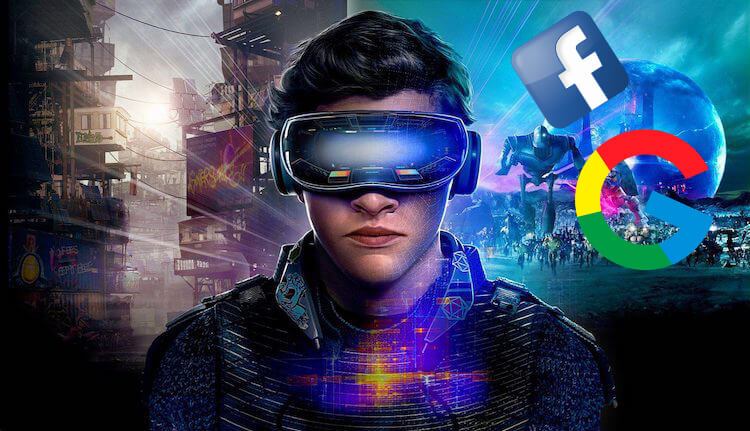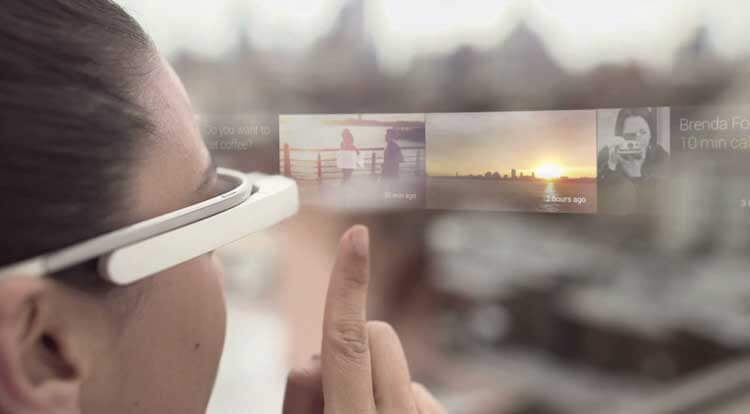Not long ago, Mark Zuckerberg demonstrated his vision of Facebook as a metaverse. Everything sounded very cool and promising, but if you look at all this more carefully, it immediately becomes clear that the company itself is not completely sure of what it has planned. Many even accused her of being a distraction and simply trying to score points and show her worth amid the scandals that constantly appear around the company. Data leaks, malfunctions, aggressive advertising policies – all this gives reason to believe in the opinion of such experts. We will not gossip on this topic now, but look at the situation from a different angle and try to understand why the metaverse is not needed by Google and other market players.

Don’t blindly rely on technology. It could end badly.
Contents
What is the metaverse for?
The metaverse can be called a way to escape from reality . But it’s hard to say that this is a good, and even more so the best, way of such an escape. It is hard to disagree that a fully realized metaverse will push people to spend their lives in worlds that will increasingly move away from the physical.
Despite the high ambition and advancement of technology, this is just a rebranding of virtual reality. You will still find yourself with your eyes in another non-existent place, without getting up from the sofa or without leaving the room. The man won’t even be there. It will be replaced by the same avatar that exists only in the form of a program code.
In some films, like Ready Player One, it has already been shown how people run away from reality into a beautiful world instead of tidying up their own, which is getting worse from the fact that it is more and more thrown. This is not just a dystopia, but a one-way trip. As the virtual world improves, we simply do not want to go back, replacing the real world with this, in fact, drug.
Development of the metaverse
This escape from reality is becoming more and more possible due to the fact that various companies are actively working on a virtual reproduction of the physical world and luring us into it, promising sensations that did not exist before.

Anything can be in the metaverse. It is enough just to go into it.
In the metaverse, you can do just about anything you can imagine – get together with friends and family, work, study, play, shop, create, and experience completely new experiences. It will even be possible to become anyone there. But will such an achievement of the dream of a lifetime be enjoyable if it is just “at the push of a button”?
Why the metaverse is dangerous
Most troubling is Mark Zuckerberg’s belief that the metaverse is simply an extension of the company’s mission and social applications today, not something completely different or a new stage of development. Although it must be admitted that people, in principle, strive for different forms of unification, and the common metauniverse is one of these forms.
Today Facebook, Instagram, and WhatsApp are where you specifically go to chat. The metaverse isn’t just about communication. In it, according to the idea, it will be necessary to spend 24 hours a day and 7 days a week, building your new communication there.
A whole army of problems has been built up against this. From technical difficulties and lack of computing power to questions about who will rule this world at all and whether the human psyche will cope with such a radical restructuring.
This does not mean that I am against technology. They should develop, but doesn’t such a leap seem very sharp? Virtual reality is immersive and will thrive for gaming and even educational purposes. However, ideally, it should always run parallel and not intersect with our world.

Life in a computer is possible, but I would not like to bring it to that.
Virtual reality versus augmented
Based on the above, it is logical to ask the question, what should tech companies do? One might assume that it would be more correct for them to concentrate their efforts not on virtual, but on augmented reality. This is really interesting and will allow not to break the connection with reality, but to expand what is and should be.
People will wear glasses that are overlaid with information such as routes, famous places and even people’s names if you integrate this with social media and your friends / colleagues / acquaintances list.
There was a time when smartwatches were seen as something that could replace a smartphone. In retrospect, this should never have happened, as wearable wrist devices could never be productive for reading and typing large text. In the short and medium term, smart glasses are the only thing that can somehow accomplish this function thanks to virtual screens and keyboards.

Augmented reality is much more interesting than virtual reality.
Should Google make its own metaverse
Some investors may argue that Facebook’s metaverse plan is better than augmented reality, but in reality creating a shared virtual reality is an unnecessary and slippery slope. It may turn out to be too profitable, but it is a road to nowhere. Even from the point of view of moderation and management.
If we talk about big players, then besides Facebook (now Meta), probably only Google ( possibly Apple and Microsoft ) can do this. But she just lacks social discernment, as evidenced by her many failed messaging apps. She also abandoned virtual reality, a fundamental technology necessary for the social metaverse, at one time.
Looking at Google today, we can say that its AR products work exclusively at the software level. It’s about building services that work on mobile devices but really thrive on smart glasses. Google Maps Live View overlays directions, street signs, and landmarks on the real world to help you navigate. The company uses Street View for its visual positioning system (VPS), while these AR overlays are increasingly working indoors to help you navigate public transit stops.
Another great AR service is Google Lens . This visual search tool today can translate, copy text, recognize QR codes, find foods, and identify objects including buildings, plants, and animals. On smart glasses, Google Lens and Live View may well become your primary user interface for communicating with the world around you. But this world will be real, just slightly improved and simplified.

Such technologies will truly complement life, not replace it.
What hinders the development of augmented reality
Of course, for further development, more consumer products are needed in this area. You can do this on phones, but the process is not as intuitive as it should be. Google’s further plans are still shrouded in mystery, but surely in its secret laboratories, relevant work is underway and new gadgets are maturing.
Last year, it acquired North, which made Focals smart glasses. This acquisition undoubtedly contributed its know-how in the areas of wearable devices and consumer electronics. Meanwhile, as evidenced by the Starline project (a conference booth with a 3D display instead of a flat screen, shown at I / O in May), the team is able to keep the equipment secret.
There is very little news right now compared to Meta (you have to get used to saying that), which loves to advertise R&D achievements as soon as they think about them. But let’s hope that Google hardware is evolving at the same pace as the software already running on hundreds of millions of phones.
In October, Google CEO Sundar Pichai said that hardware and platform teams are “thinking through” augmented reality. And the company’s chief hardware officer, Rick Osterloh, previously said the Tensor chip is “the perfect foundation for significant improvements in AR.” This means that work is underway and there are prospects.
Of course, Google’s reluctance to publish information about its work in this area may well be due to the unavailability of technology. In the meantime, Glass’s reputation was damaged, of course, in which the company’s ambition outpaced what was technologically feasible at the time. But who says Meta is good and ready? Even Meta itself doesn’t say this.
Consumer augmented reality in terms of technology will require more years of development of communication systems, equipment and computing power, approvals and approvals. But we are inevitably approaching the moment when it will become reality. The main thing is that the emphasis on the metaverse does not become too strong.

If you play around in different “realities”, then the most gloomy predictions from science fiction films, including “The Matrix”, can come true.
Apple Augmented Reality
Apple has chosen a certain middle path . She also works in the field of augmented reality, and even Tim Cook has repeatedly stated that he believes in it, and not in virtual reality. Perhaps that’s why the company is rumored to be making mixed reality glasses. They will combine both principles: augmented and virtual. That is, it will be an opaque screen with the ability to transmit information from the camera through to it. Along the way, the signal will be processed and additional elements will be superimposed on it.
All companies still have a chance to succeed in this business, but they need to hurry up, since the competition is high. Even Microsoft last week reported on its steps in this direction.
In summary, I will add that AR has a chance to complement your life and adapt to it, while the metaverse requires you to live and experience a different world . The ultimate goal is to get you to consume more and more – from your personal to work requests. Technology should be an auxiliary tool rather than a replacement. This means that if companies with such influence as Google do not take steps towards replacing reality, we are less likely to face a dystopian future in the spirit of the “Matrix” or other movie worlds in which people become part of the computer.